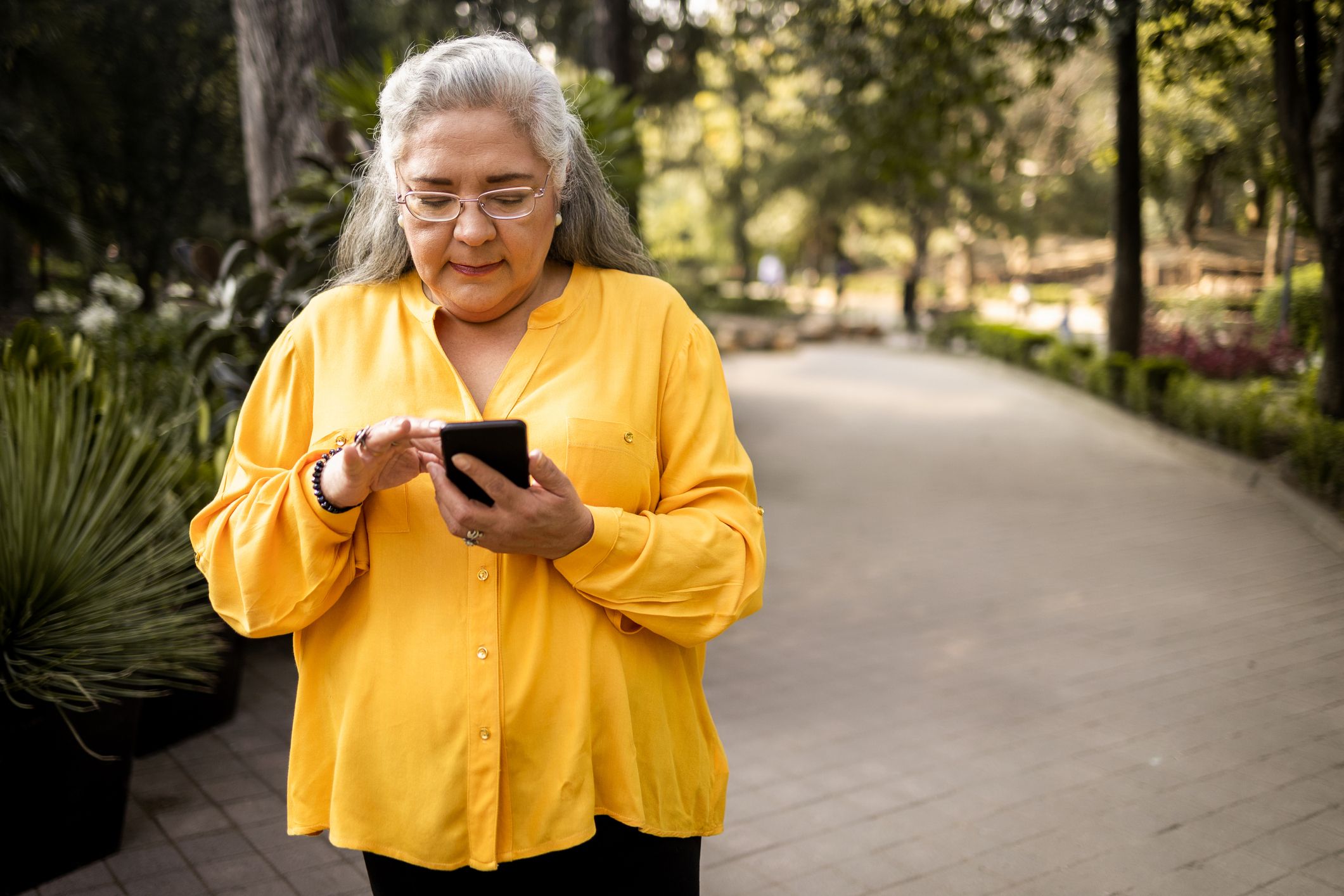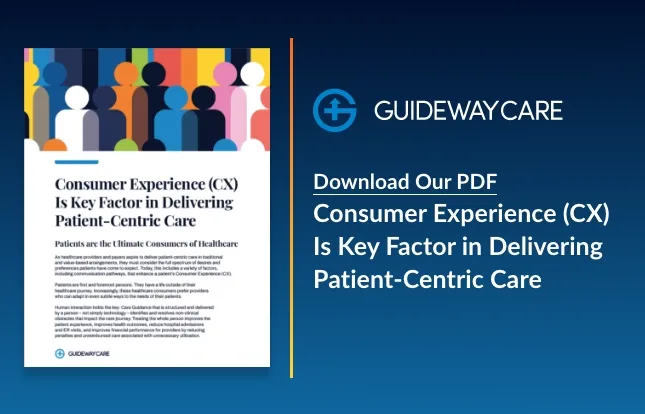Consumer Experience (CX) Is Key Factor in Delivering Patient-Centric Care – Part II

Patients are the Ultimate Consumers of Healthcare
As providers and payers aspire to deliver consumer-centric care, they must consider the full spectrum of services and activities that consumers expect and consider lifestyle issues and social barriers that impact access to quality care.
In this two-part series, readers will learn about the value of human interaction and the profound impact of personalized care guidance in resolving barriers to care attributed to SDoH, improving health outcomes and patient satisfaction, and lowering costs by reducing hospitalization and readmissions.
In Part I, we examined Healthcare Consumerism and provided an overview of Customer Satisfaction (CX) Surveys which validate a need for the human touch.
In Part II, readers will gain a better understanding of the value of care guidance and the benefits of human support.
Part II Value of Care Guidance: Applying CX Insights to Improve Patient Experience
With the validation of evidence-based research and surveys, and through Guideway Care’s extensive experience, it is clear that at-risk patients require more, and more efficient, levels of human support. That’s why health systems nationwide rely upon our care guidance teams that actively address non-clinical issues like practical problems, information deficiencies, confusion, anxiety and cultural concerns to bring about better patient outcomes and an improved healthcare CX.
Addressing a Critical Preference of Patients and Solution for Healthcare Systems
When it comes to one’s health, digital prompts and impersonal responses fall woefully short of providing the care that people want, need and now expect. Virtually no one wants more “self-help” to navigate a system they already find confusing and disjointed, and while digital prompts can be helpful for some things like appointment reminders and self-reported outcomes, tech-only approaches fail when the patient or caregiver has a question that is only mildly complex.
The confusion and waste in the healthcare system means we must reintroduce different kinds of human interaction to address patient and caregiver non-clinical needs in ways that help accelerate question and barrier resolution while ensuring clinical workers are able to work at the top of their license.
Forbes: Where Seamless Digital CX Meets the Human Touch
If there is one thing learned during and following the pandemic, it is not to underestimate the human desire for in-person interactional CX. There is an assumption that consumers are all about digital, but in reality, customers still want that human touch. How can hospitals capitalize on the CX momentum? According to Forbes, the answer lies in ensuring they fully understand what consumers want and guarantee CX investments mirror the demands.
Value of Care Guidance
Care guidance is particularly valuable for vulnerable patient populations experiencing certain socioeconomic conditions and characteristics that pose barriers to care access. These factors include social determinants of health (SDoH) such as race, ethnicity, language proficiency, age, socioeconomic status, place of residence and disability.
Our care guidance programs are built specifically with CX in mind: a peer-to-patient-powered foundation that is strengthened with evidence-based protocols and innovative technology. Together, human and tech elements are effective in identifying practical issues and effective in proactively resolving non-clinical barriers to a patient’s continuum of care as they navigate the healthcare system.
Care guides collaborate with hospital and healthcare system partners to enhance patient CX in Value-Based Care. Guideway Care achieves this though its unique service as a solution approach which utilizes highly trained “Care Guides” operating within a scalable, technology-enabled platform to activate patients and their families and uncover their practical, non-clinical issues and barriers experienced during a patients care journey. AI-assisted workflow protocols also ensure that clinical barriers are also escalated to proper clinical care teams and proactive interventions are promptly initiated by the care guides to resolve non-clinical barriers to care.
The proposition of a care guidance experience provides hospitals and health care facilities with an added level of support, functioning as an extension of their clinical teams, freeing up labor, time and resources so that nurses and staff can focus on high-value clinical tasks. This improves health care provider ability to deliver care centered around patients, consider patients’ unique needs, and deliver personalized care in a way that will generate the best possible patient outcomes and value for all stakeholders.
A successful care guidance program should include:
- The right mix of people and technology working together to provide personalized guidance that addresses the needs of all patients, improves individual health outcomes and enhances their satisfaction.
- Human Patient Monitoring (HPM) provides the high-tech capabilities of Remote Patient Monitoring (RPM) with the human touch.
- Complementing the role of analytics to help identify probable risk, technology can facilitate communication — although neither can establish the needed personalized, peer-to-patient relationship, as provided by care guides, that leads to real, meaningful patient activation.
Rightpoint: Is Human CX Interaction an Important Part of the Brand?
Healthcare branding is at the nexus of shaping how a healthcare organization is perceived by those who experience it. This includes doctors, nurses, clinicians, board members, but most of all, patients.
Since many health systems have been touched by digital transformation, the Rightpoint organization wanted to know, “Are consumers satisfied with their digital CX experiences, and is human interaction an important part of the brand?”
To understand the dynamics, Rightpoint conducted an online research study with U.S. consumers who deftly move across digital and physical modalities every day. Rightpoint asserts that human exchanges are an opportunity to create meaningful connections – when done right. In this digital world, it’s those interactions with humans that “make or break” a lasting customer relationship. In this report, key insights revealed why personalized human interaction plays such an important role in digital experiences. Engaging with live agents is perceived as the superior modality for service and support interactions.
Guiding the Future of Equitable Health Care
A care guidance solution requires collaboration with like-minded healthcare partners who are dedicated to improving health equity, and care access and delivery, for their entire communities. For more than a decade, Guideway Care has partnered with hospitals, health systems, payers and provider organizations, and continues to positively enhance patient outcomes and experiences, while also improving financial and operational performance for its partners. In most cases, Guideway Care can have initial implementation completed in 45-60 days. To discuss how these solutions can positively impact your business, please contact us.
Contact Us Today To Learn How We Can Help
"*" indicates required fields




